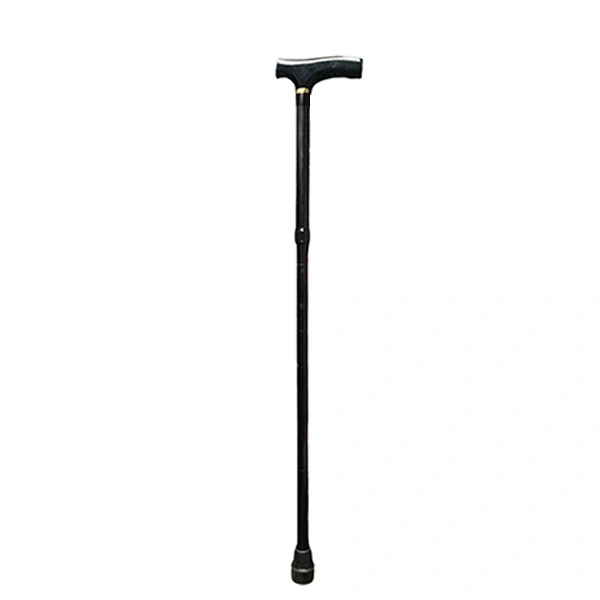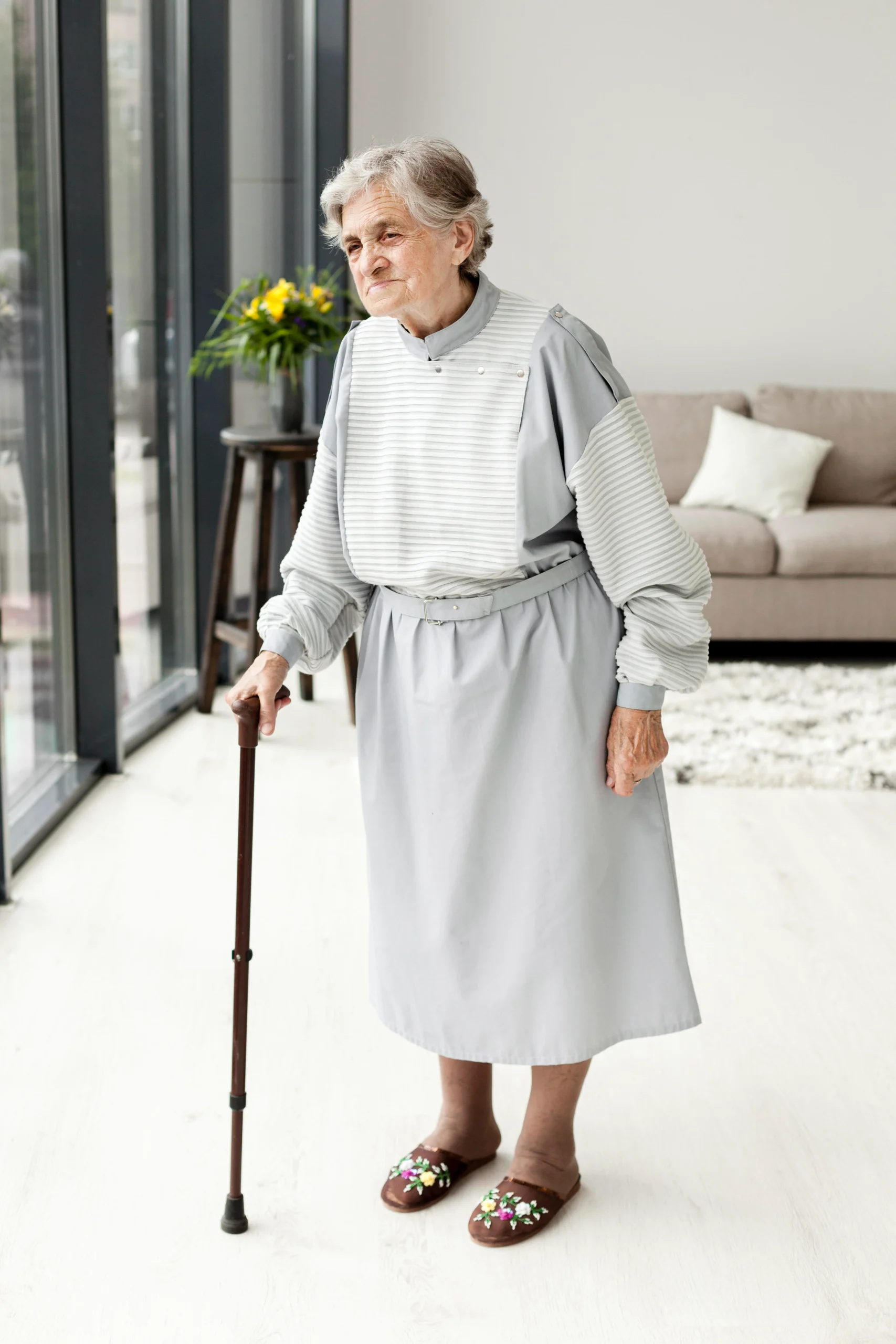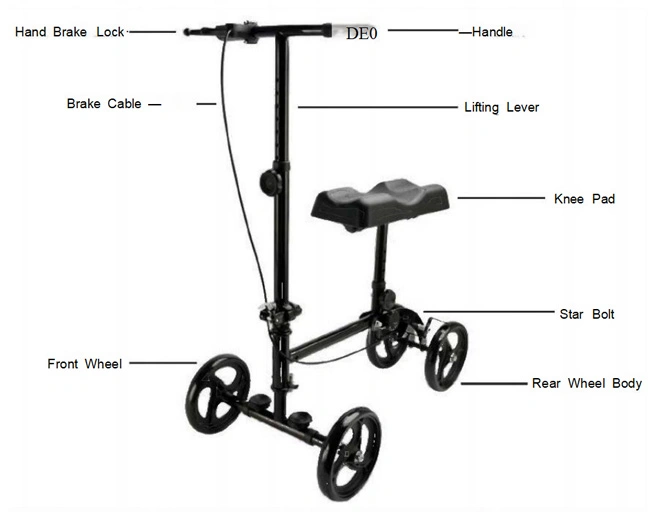How Crutches Affect Your Mobility: Tips to Reduce Walking Fatigue
Time : Nov 03, 2025 View : 354
Walking with crutches can really change your daily power levels and whole moving experience. Whether you are healing from a hurt, operation, or handling a long-lasting issue, knowing how to cut down tiredness while using crutches is key for staying on your own and feeling good. The secret is in good method, gear setup, and growing the right body fitness to help your moving needs.

How Crutches Influence Your Mobility
Using crutches totally shifts how your body moves and spreads weight while walking. This change in body mechanics touches everything from your power use to your muscle work patterns. It makes it vital to grasp these shifts for best moving.
Biomechanical Changes When Using Crutches
When you start using crutches, your body goes through big body setup changes. Changed step patterns can cause more power spending because your usual walking beat is broken. Studies show that walking with crutches can raise power use by up to 60% compared to normal walking. This makes tiredness a usual worry for users.
Weight sharing moves a lot. It puts more push on the upper body than it is used to. Your shoulders, arms, and middle muscles now have to hold weight that was before held by your hurt or touched leg. This new sharing needs careful watch on pose and method to stop too-much-use hurts.
Muscle groups not usually used in walking get very busy when you use crutches. Your triceps, latissimus dorsi, and middle holders work extra hard to hold your body weight and keep balance. This bigger muscle need explains why many crutch users feel tiredness in surprise spots of their body.
Common Causes of Fatigue When Walking with Crutches
A few things add to the tiredness felt by crutch users. Too much use of shoulder and arm muscles from holding weight is maybe the biggest cause. These muscles are not made for long weight-holding tasks. So, they get tired fast and might get hurt.
Bad pose and wrong crutch height add strain all over your body. When crutches are too high or too low, they push your body into odd spots that need extra power to keep. This wrong line can cause pain in your neck, shoulders, back, and wrists.
Lack of teamwork or balance leads to poor moving patterns that waste power. Many new crutch users grow make-up moves that may feel better at first. But, they really raise the total power cost of walking.
Techniques to Minimize Walking Fatigue
Putting in good methods and making right changes can greatly cut tiredness and better your crutch-walking time. These plans focus on making your gear setup best, fixing your walking method, and building the body strength needed for good moving.
Optimizing Crutch Fit and Posture
Right crutch change is basic to cutting tiredness and stopping hurt. Set crutch height so that elbows bend at a 15–30 degree angle when you hold the handgrips. This spot lets power pass well. And it stops too much strain on your joints.
Keep straight pose to cut spine and shoulder stress during your walking times. Hold your head up, shoulders back, and do not bend forward over your crutches. This line spreads forces more even. And it cuts the work on single muscle groups.
Make sure handgrips line up with wrist crease for good support when your arms hang easy at your sides. This line helps neutral wrist spot. And it stops repeat stress hurts in your hands and lower arms.
Improving Walking Technique with Crutches
Growing good walking patterns is key for saving power. Use a beat step pattern to save power by setting a steady speed that lets your muscles work well. This beat helps stop the stop-and-go moves that greatly raise power spending.
Do not drag feet or stretch steps too far. These moves waste power and can hurt your balance. Instead, focus on controlled, on-purpose moves that keep your middle of weight inside your support base.
Practice smooth switches between steps to keep balance and cut the muscle work needed for each move. Smooth switches lessen the hard hits that can cause tiredness and unease all over your body.

Strengthening and Conditioning the Body for Crutch Use
Body prep plays a big part in cutting crutch-linked tiredness. Do upper body workouts that target shoulders, arms, and middle muscles that will be used a lot during crutch walking. Focus on useful moves that copy the needs of crutch use.
Add stretch routines to stop muscle hardness and keep bend in your shoulders, arms, and back. Regular stretch helps stop the growth of make-up move patterns that can raise tiredness.
Slowly add more walking time to build staying power instead of trying long distances right away. Start with short times. And slowly make your walking time longer as your strength and teamwork get better.
Practical Tips for Daily Comfort and Efficiency
Besides good method and fitness, a few useful points can greatly touch your comfort and speed while using crutches. These tips cover gear pick, pain control, and place planning.
Choosing the Right Type of Crutches for Your Needs
Knowing the different kinds of crutches ready helps you pick the best one for your own needs. Axillary crutches give steadiness. But they may cause underarm unease during long use. So, they fit better for short-time uses.
Forearm crutches give better moving around for long-time use. And they usually cause less tiredness because of their body-fit design. These crutches spread weight better. And they let more natural arm spots.
Managing Pain Points and Preventing Skin Irritation
Comfort add-ons can greatly better your crutch-walking time. Use padded grips and underarm pads to cut rubbing and push spots that can grow during long use. These add-ons help stop skin break and cut unease.
Wear helpful gloves to stop hand tiredness or bubbles, especially during the first change time when your hands are getting used to the grip push and rub of crutch use.
Planning Ahead for Movement in Different Environments
Place knowing is key for good crutch use. Find easy paths with ramps or lifts when you can. This cuts the power spending linked with handling stairs and other blocks.
Use backpacks or crossbody bags to carry things without hands. This lets you keep right crutch method without hurting your balance or grip.
Xunyu Medical: A Trusted Supplier of Mobility Aids
When picking mobility aids, choosing a dependable seller makes sure you get quality gear made for safety and comfort. Xunyu Medical is a professional wheelchairs supplier. And we focus on useful help tools for elderly, including medical wheelchairs, crutches, and other mobility tools that feel right in daily use.
Reliable Products Designed for Safety and Comfort
Xunyu Medical offers a wide range of mobility aids. These include bedside handrails, crutches, wheelchairs, bath chairs, and walking aids. Their products stress body-fit design, lasting power, and user safety. Xunyu Medical’s assistive devices for elderly are built around comfort, lasting power, and user trust. Every medical wheelchair or walking aid goes through many checks.
With a strong name in the health care field, Xunyu Medical helps patients through all steps of mobility healing. Our medical assistive devices are now sent to Europe, America, the Middle East, and the Asia-Pacific. Thousands of families and care centers use them every day.

Conclusion
Learning the skill of walking with crutches needs patience, practice, and right prep. By using the methods listed above, you can greatly cut tiredness and better your moving time. Remember that building strength and teamwork takes time. So, be kind to yourself as you get used to using crutches. Focus on keeping good form. Slowly raise your activity level. And listen to your body’s signs to stop too much work.
FAQs
Q1: How long does it typically take to get comfortable walking with crutches?
A: Most people need 1-2 weeks to grow basic comfort and teamwork with crutches. But, building the strength and staying power needed for long walking can take 4-6 weeks of regular use. The time changes based on your fitness level, the reason for crutch use, and how often you practice good method.
Q2: Can using crutches cause long-term problems if used incorrectly?
A: Yes, wrong crutch use can lead to a few issues. These include nerve push in the armpits, shoulder pinch, wrist strain, and back pain. These problems are mostly stoppable by making sure right fit, keeping good pose, and using right walking method. Regular breaks and strength workouts also help stop too-much-use hurts.
Q3: What should I do if I experience numbness or tingling in my hands while using crutches?
A: Numbness or tingling usually shows too much push on nerves. It often comes from wrong grip or crutch height. First, check that your crutches are set right. And make sure you are not gripping too hard. Take often breaks to ease push. And think about padded grips or gloves. If signs keep going, talk to your health care giver. This may show nerve push that needs care.


